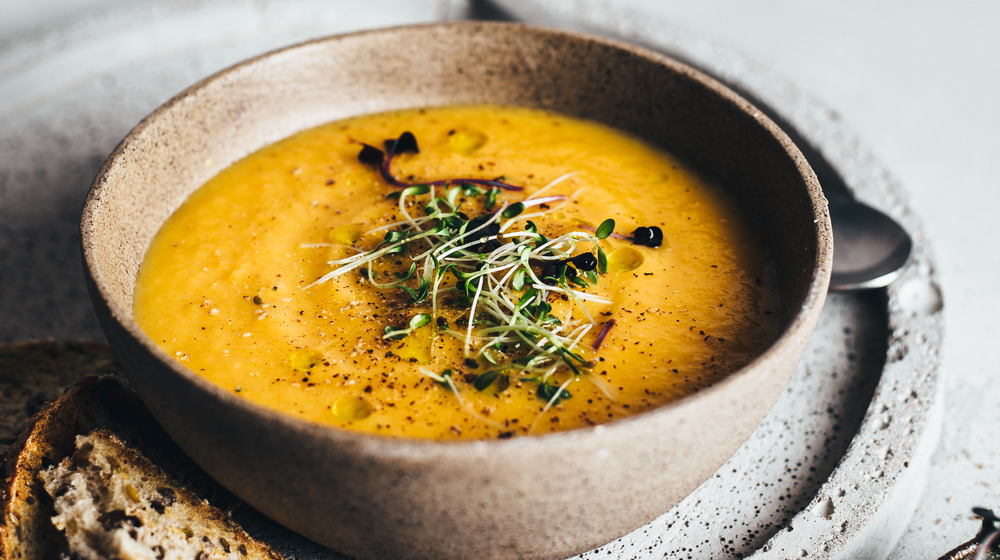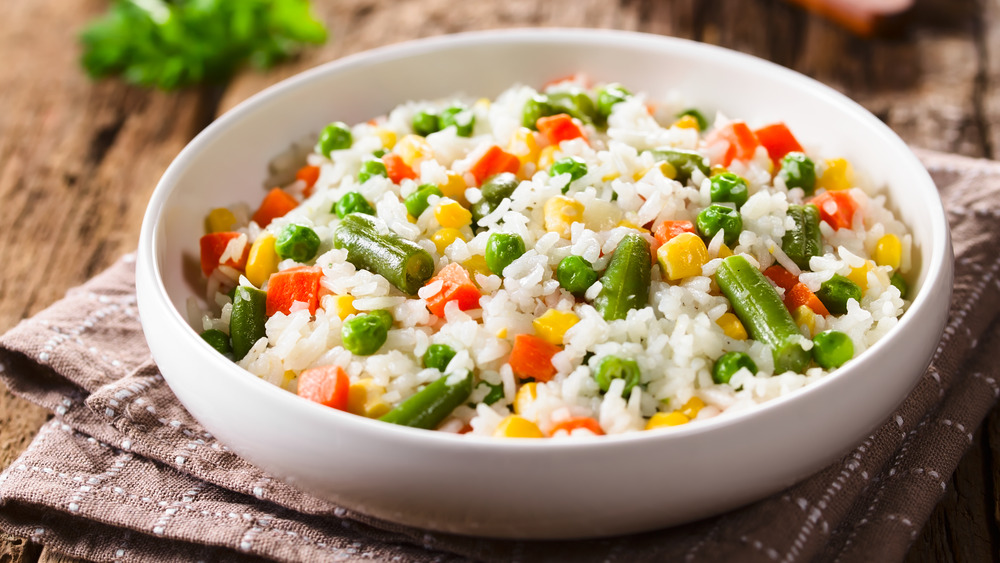What Is The Typhoid Diet?
Perhaps you've overheard older generations talk about the 'good ol' days' or read about typhoid fever in historical documents. Typhoid fever is a bacterial infection caused by Salmonella typhi. The chances of picking up typhoid fever are increased during trips outside of the U.S. (via Mayo Clinic). While it is contagious, typhoid is also usually curable with nutritional changes and antibiotics.
According to the Mayo Clinic, Salmonella typhi is transferred through unclean food or water. Treatable symptoms including headache, weakness, and stomach swelling can surface within "one to three weeks." Until the illness subsides, one can adopt the typhoid diet to ease symptoms. However, you should only use the diet on a short-term basis.
Healthline describes the typhoid diet as rich in protein, omitting spicy dishes. A person who has contracted typhoid fever will benefit from generous amounts of water while enjoying most meals at home. Making meals to heal is thankfully fairly simple while on the typhoid diet.
Foods to eat on the typhoid diet
Filled with plenty of low fiber foods, the typhoid diet is meant to relieve the body of extensive digestion (via NetMeds). The aim of the typhoid diet is to take in soft, high-calorie foods to pass easily. Recommendations include cooking with high temps, avoiding fast food, and steering clear of your favorite food trucks. Although the options are bland to taste, they accelerate the healing process significantly.
Items to add to your grocery list on the typhoid diet are drinks such as herbal teas and bottled water, soups, and broths, with a variety of cooked vegetables. Fruits fuel the body with antioxidants and may be enjoyed canned or fresh. Throw in a light protein such as chicken, well-cooked fish, or turkey as a main dish. NetMeds proposes skim milk products, yogurt, and poached eggs for adequate protein intake. Additionally, soft grains are allowed on a small scale like white bread and rice (via Healthline).
Eating raw cruciferous vegetables such as broccoli and cabbage is not encouraged while on the typhoid diet. Kiwi and pineapple, being highly acidic, should be omitted from the menu as well. It is also wise to steer clear from spicy foods, foods high in fat, whole grains like quinoa and brown rice, along with nuts and seeds.
Those following the typhoid diet should only do so while symptoms persist. Adopting the diet may assist in treating other gastrointestinal conditions. The Mayo Clinic recommends adequate handwashing to accompany the nutritional changes.
Typhoid fever is a potentially dangerous — yet curable — infection. Symptoms can be alleviated by increasing dietary intake of carbs and protein from soft, bland foods.


